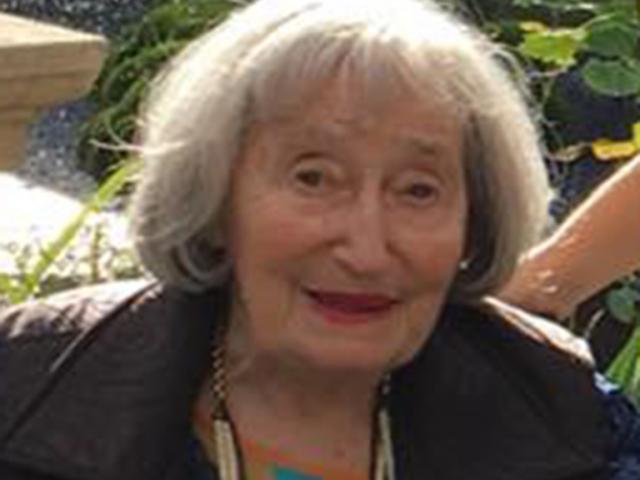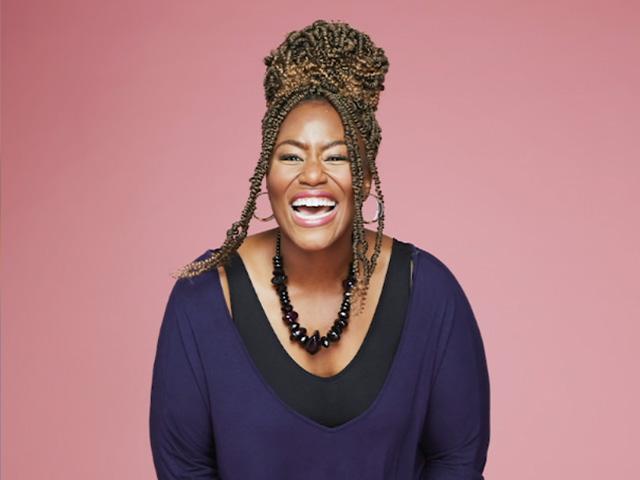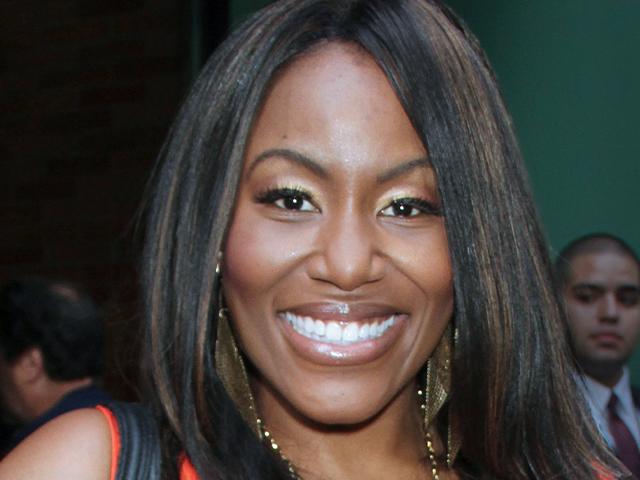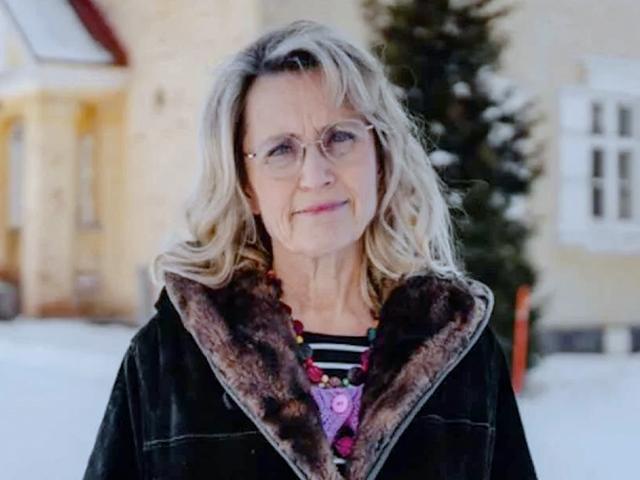JERUSALEM, Israel – "My dear Rosi, I am happy that you received our greetings. What are you up to my darling? Be well. Many kisses from your mother." That was the last letter Berta Joshkowitz wrote to her daughter Rosi from the Bedzin ghetto in Poland.

A mother's last letter to her daughter
Each year, Israelis pause to remember the Holocaust – the slaughter of 6 million Jews by the Nazis and their collaborators. But in talking about such a daunting subject, it's often hard to grasp the reality of each person's story…his or her life, family, hopes and dreams.
A new online exhibit from Yad Vashem, Israel's Holocaust museum in Jerusalem, aims to tell those stories.
Berta and her husband, Schlomo, and their son, Elieser, were sent to Auschwitz when the ghetto was liquidated. They were murdered there.
Rosi and her sister, Ruth, survived and immigrated to Israel.

Berta Joschkowitz
"In every letter, at the beginning and at the end, she wrote, 'take care of your health,'" Rosi said.
Yona Kobo, from the Internet Department of Yad Vashem, oversees the new online exhibit entitled, "Last Letters from the Holocaust: 1943, 'I Left Everyone At Home.'"

Yona Kobo looks over some of the letters
Kobo gave CBN's Scott Ross an extremely rare look at the actual letters and the Yad Vashem archives.
"Each story is unique and [in] those online exhibitions we're telling stories – first, to commemorate the victims, to give them back their names, human dignity," Kobo explained.

The exhibition's title refers a postcard Tuvia Grin wrote to his sister, Hava, who was already living in Mandatory Palestine – pre-state Israel.
He wrote, "I left everyone at home, Mother and Father, in the ghetto, everyone. I feel terrible for leaving them in the thieving hands of Hitler's robbers." It was the last anyone heard from him.
"The letters were chosen because they are very intimate, very personal, very unique – because each handwriting is different from the first one to the other. You can find stains of tears," Kobo continued.

Yona Kobo in the museum's archives
"When you read these letters from – from mothers, fathers, children, what does that do to your heart?" Ross asked.
"Sometimes it's tearing me apart. Sometimes I'm crying or weeping," she said.
According to Kobo, amazingly, the postal service continued throughout World War II, even in the concentration camps, basically uncensored. But, she said, she believed that the Jewish people sending the letters censored themselves.
One of the letters was written by 11-year-old Rivka-Regina Folkenflick to her parents Chana and Mosha and her brother, David, shortly before she was murdered.

11-year-old Regina's letter to her family
"Dearest Mother and Father, and dearest Dulu [David], How are you and how is it at that man's house? Mother, don't be upset that I'm writing so little. The man didn't have time to wait," she wrote.
"Mother dear, please give my regards to everyone, I wish you [well] and send kisses to you all. Yours, Genya [Regina] "
"Regina, was hidden [by] a Christian family. Her parents thought that was the best way to save her by putting her in a good family," Kobo said. "The child was shot. The rest of the family survived and her brother – now 84 years old – donated the letter to Yad Vashem."
Another letter is written in French by 19-year-old Rosette Bomblat.

19-year-old Rosette Bomblatt
"She was active in a group of underground movement in Paris. She helped saving other Jewish children. Her family was hidden in a village not far away from Paris," said Kobo.
"Look after your health and your hopes. I now live only for the day that we will be together again," Rosette wrote to her parents and siblings.
"All the family, except for Rosette [and her] older sister, Sarah, survived and immigrated to Israel," said Kobo. "She was transferred to Auschwitz. She was murdered in the camp."
Kobo is the daughter of two Holocaust survivors.

Yona Koba tells CBN News her story
"My mother was born in Germany and she has been through the ghetto, labor camp and a very, very long death march. She marched 800 km (nearly 500 miles) by foot, and she was liberated two days before the war was over in the Czech lands," Kobo said.
"My father survived Auschwitz and they met after the war was over," she added.
Kobo said when she was 35 years old, her father told her his secret: that he was a widower when he met her mom. He had lost his first wife and baby daughter in the Belzitz concentration camp.
This online exhibit is just one of many at Yad Vashem – the main collection of Holocaust documentation worldwide.
"So, one of the main missions of Yad Vashem is to collect into one place all the documents, all the evidence about the fate of Jews during the Holocaust. It was the first intention of Holocaust survivors the first day after the war was ended," Dr. Haim Gertner, director of the Archives Division of Yad Vashem, told CBN News.

Yad Vashem Archives Division Director Dr. Haim Gertner
"We understood that the Nazis not only planned to murder the Jews but also understood or wanted to annihilate, to erase our ability to know who were they and what happened to them…to erase the memory," Gertner said.
"So this is why Yad Vashem decided as one of its most important missions to collect all those pieces of [the] huge puzzle of our joint history into one place," he said.
The more than 200 million pages of documentation include testimonies, survivors' stories, photos and other personal items.
"We launched seven years ago a national campaign; we call it 'Gathering the Fragments.' We met until now close to 11,000 people who donated to us during the last seven years more than 124,000 items and collections," Gertner explained.

Yad Vashem's Exhibit, "Last Letters from the Holocaust: 1943, 'I Left Everyone At Home"
"Are there many survivors who are living today, who have seen this, been here and experienced this?" Ross asked.
"Yes, Holocaust survivors do see Yad Vashem as the home of their items and they say here it will be kept forever, preserve[d]," Gertner said.
He told the story of one sweater that had belonged to the sister of a Holocaust survivor. The item was precious to her because it was all she had left of her sister. The day she planned to donate it, she said she got on and off the bus 10 times just trying to get to the place.
The name Yad Vashem comes from a verse in the Book of Isaiah, which literally means a memorial and a name.

Yad Vashem, The World Holocaust Remembrance Center
"Even to them I will give in My house and within My walls a place and a name better than that of sons and daughters; I will give them an everlasting name
that shall not be cut off." (Isaiah 56:5)
"At Yad Vashem really the last two decades and more is struggling to tell the story of individuals in the Holocaust. They were human beings that used to live in Europe and elsewhere and that they had lives, they had kids, they had dreams and it tells us also something about their ability to survive during those years in those inability times," Gertner said.
Ross asked, "With modern technology and the advent of the Internet, World Wide Web, social media, how important is it to have all of this online?"
"I tell you around a million visitors are coming to Yad Vashem every year, almost 10,000 of them are visiting our reading room every year, but last year more than 90 million people all over the world – Jews and non-Jews – used our data bases online," he said.
"Because you're around this and have explored this research, do you become jaded at all? I mean it has to affect your heart?" Ross asked.
"I am a son of a Holocaust survivor myself, and I think that as an educator, our mission here to educate the next generation is what gives us the strength to think ahead, what to do with that story for generations to come," he said.
Did you know?
God is everywhere—even in the news. That’s why we view every news story through the lens of faith. We are committed to delivering quality independent Christian journalism you can trust. But it takes a lot of hard work, time, and money to do what we do. Help us continue to be a voice for truth in the media by supporting CBN News for as little as $1.










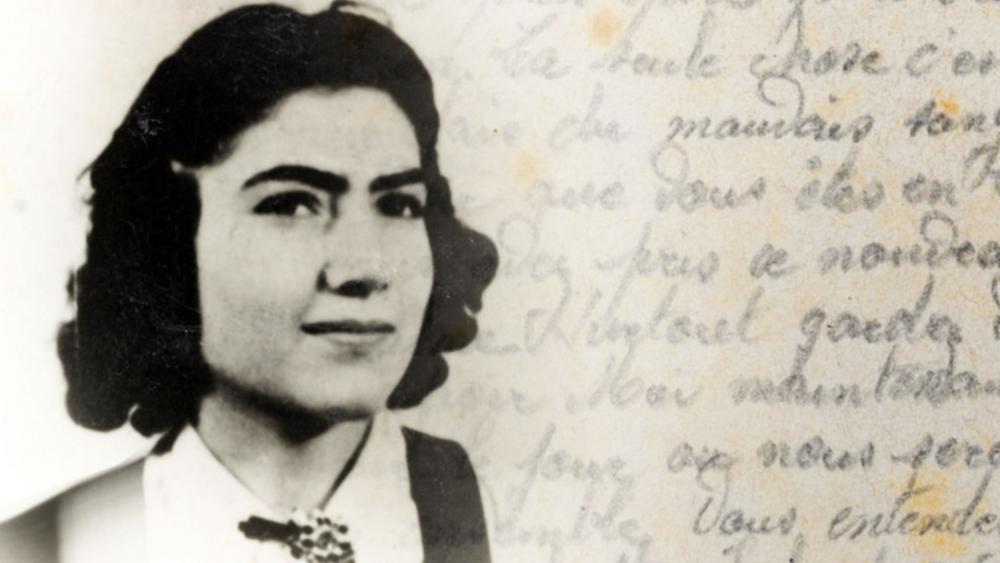
 Support CBN News
Support CBN News




